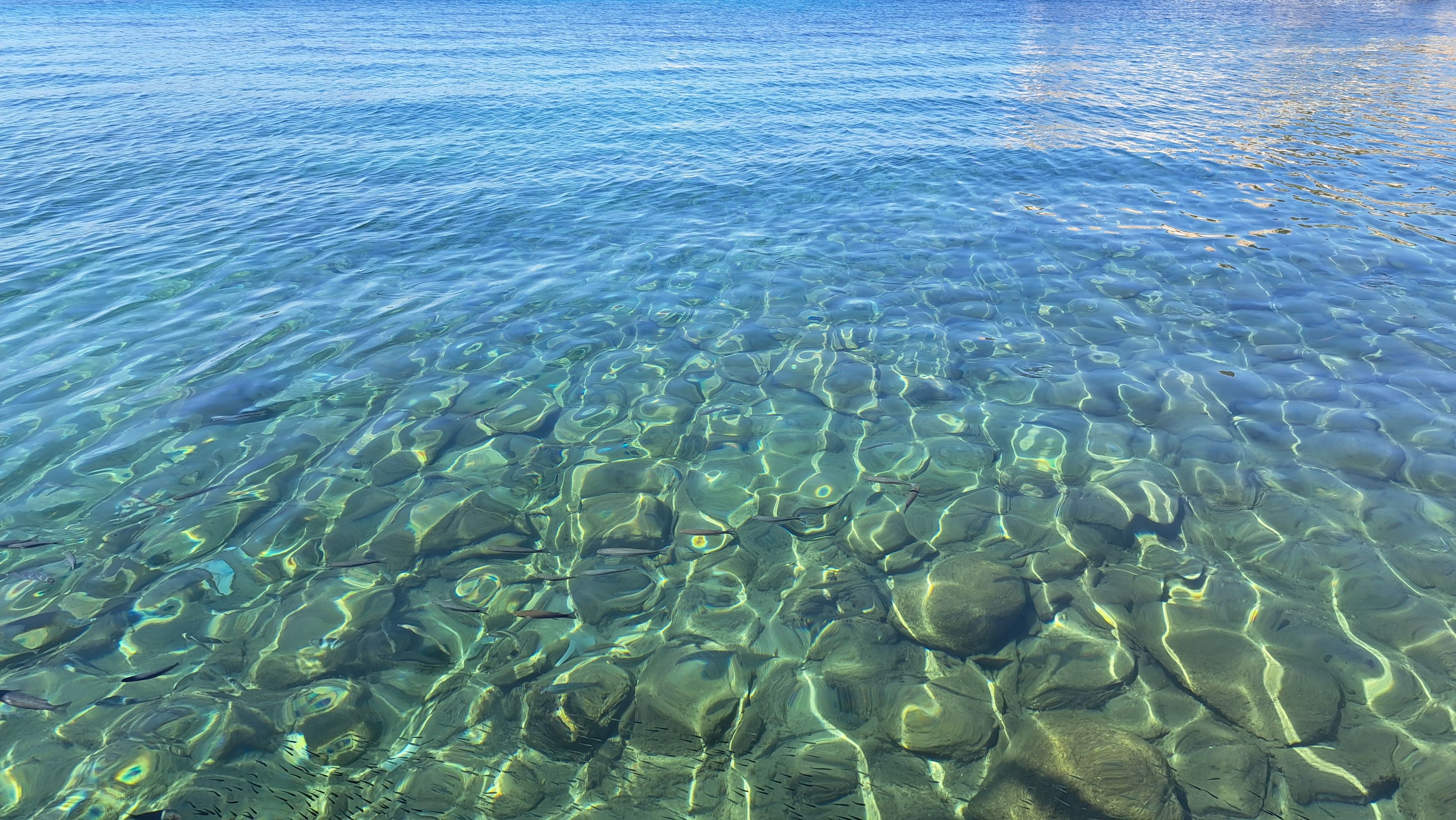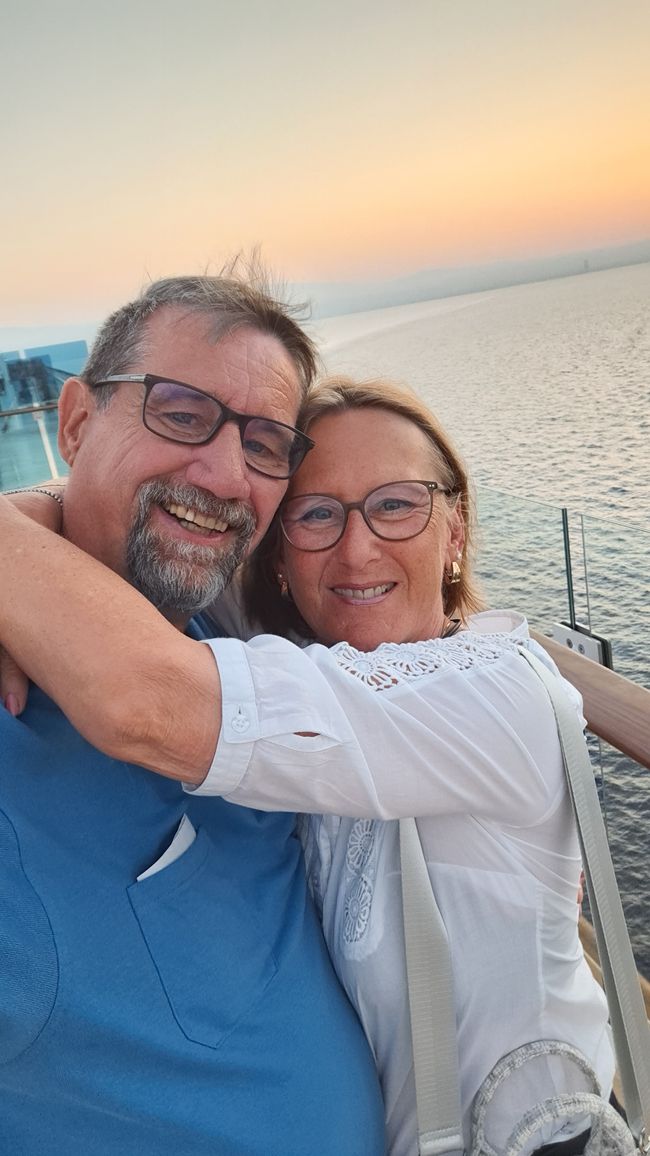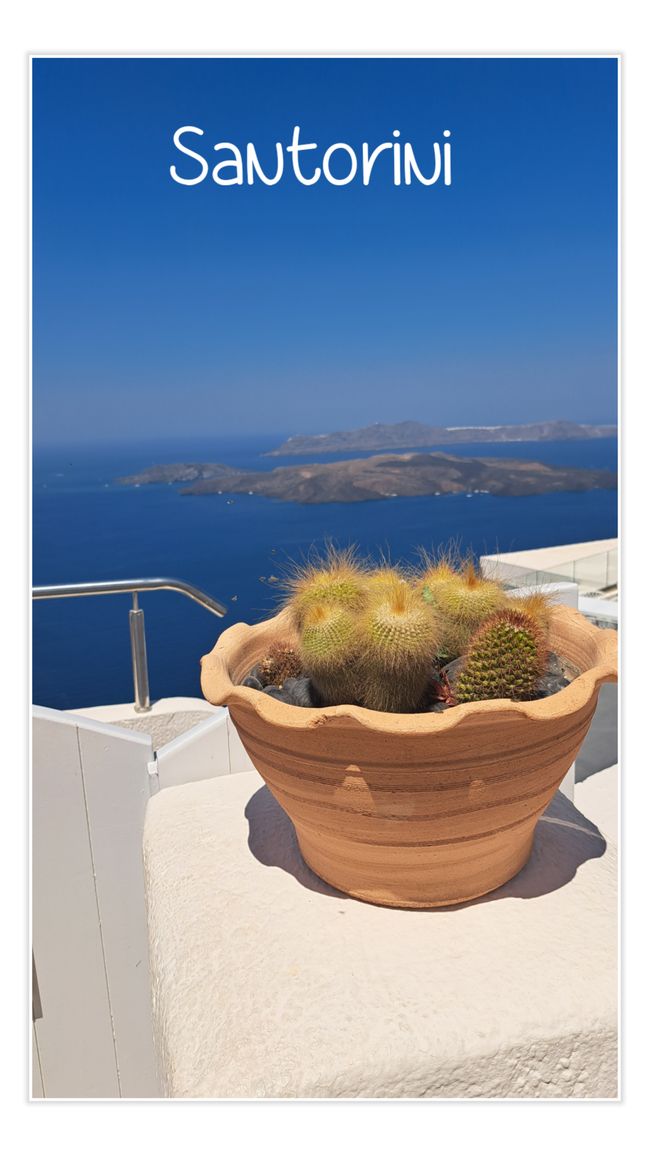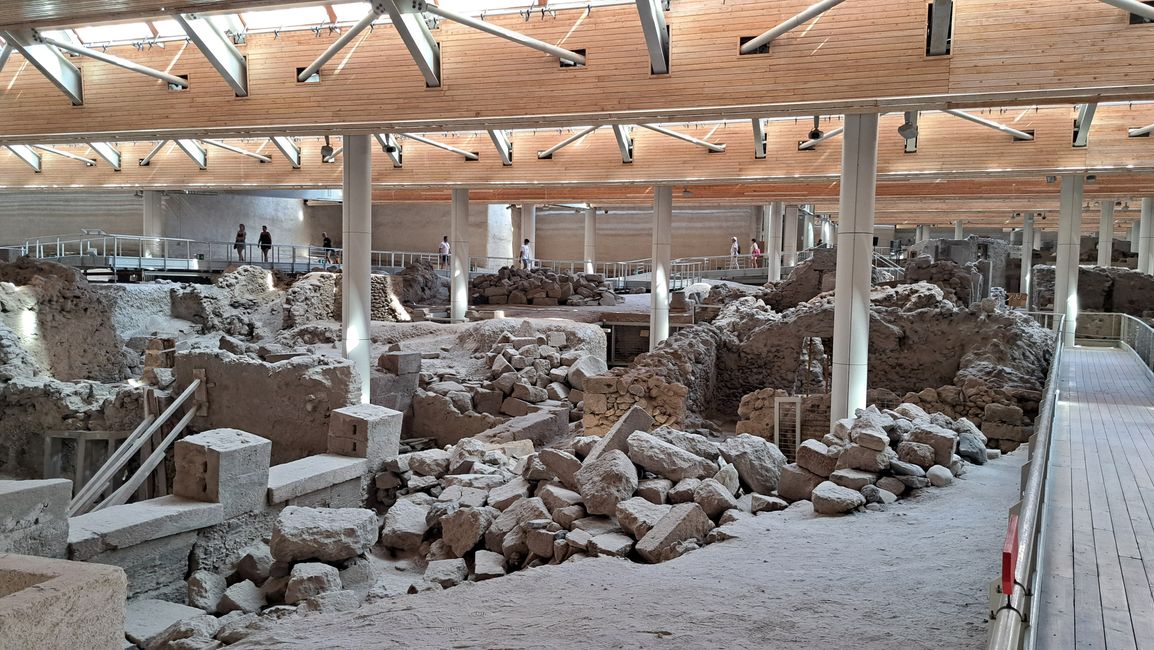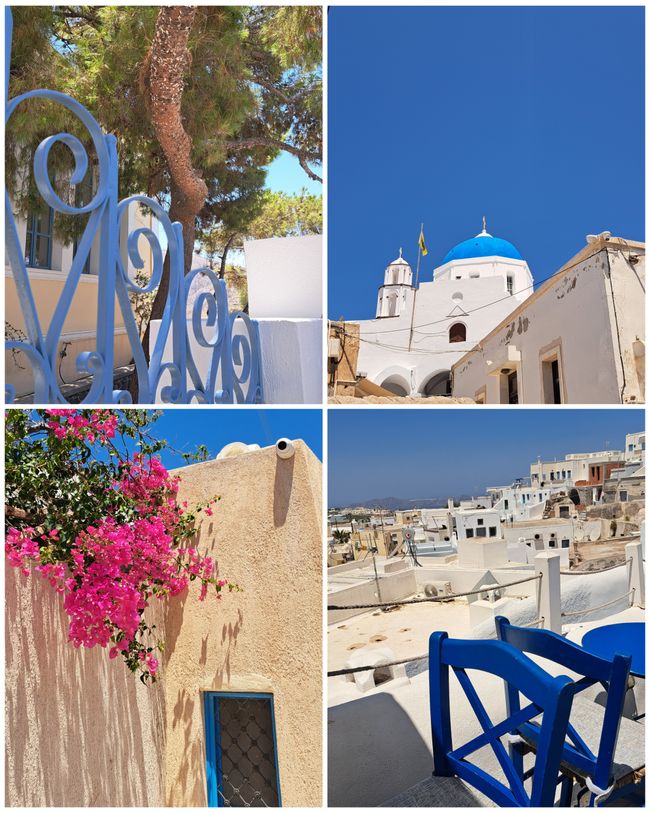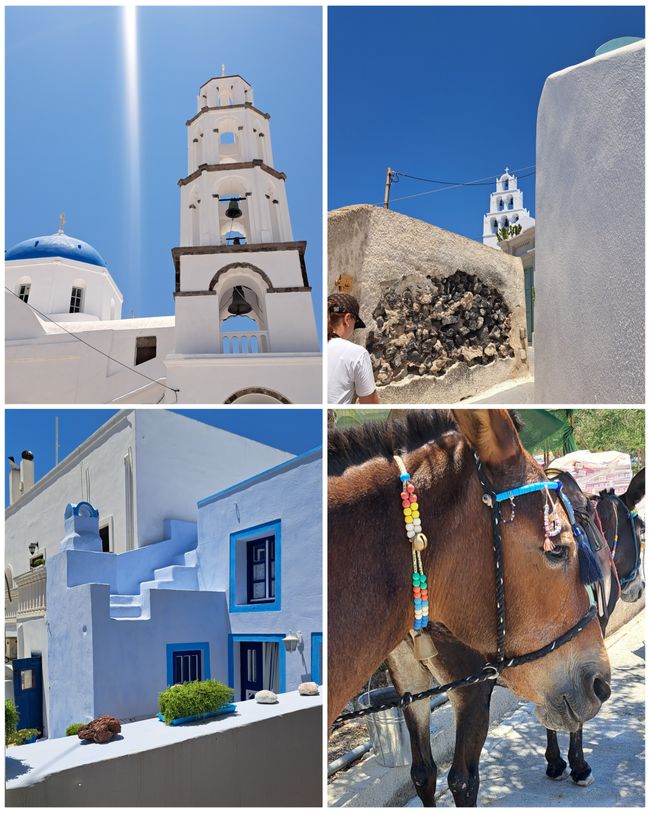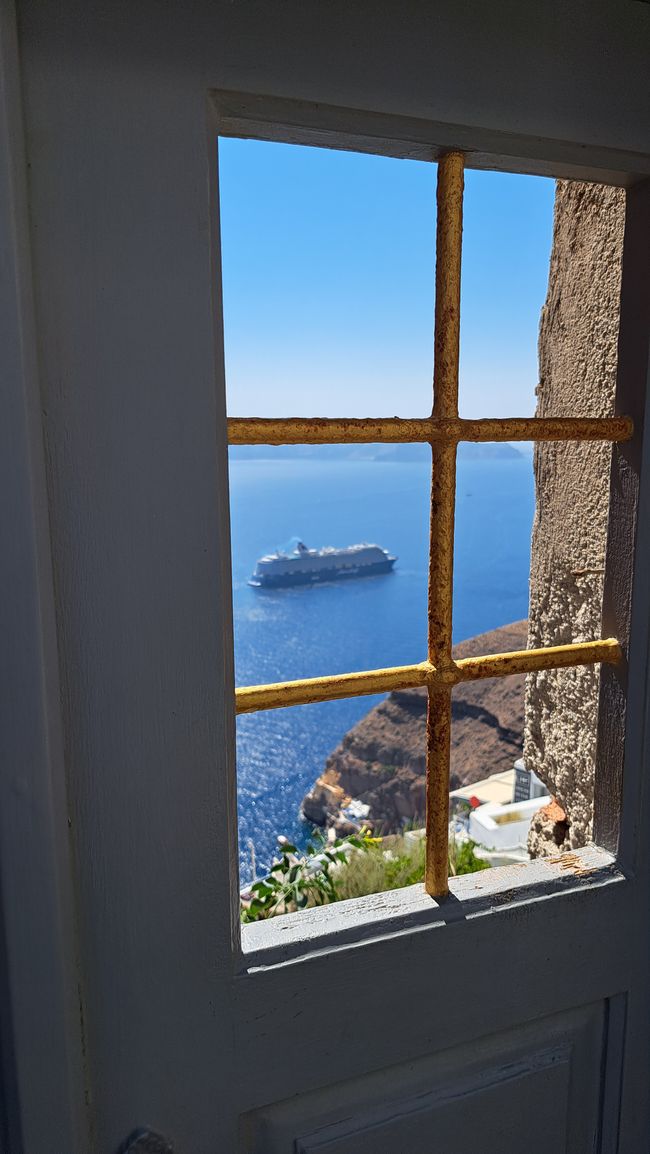Santorini - Tyira/Fira
Publicerad: 18.07.2024
In the southwest of the island lies the most significant archaeological site of Santorini: The Pompeii of the Greeks. Akrotiri first gained attention in 1867 when French geologist Ferdinand Fouqué discovered prehistoric wall remains beneath the village of Akrotiri. A few years later, French geologists and the German Robert Zahn stumbled upon more, but unsystematic, finds in the same region. It took almost 100 years before the sensational discovery of buildings preserved miraculously by ash and pumice stone. The absence of human remains, jewelry, and valuables suggests that the residents were able to evacuate to safety before the volcano erupted.
The excavation area covers approximately 10,000 sqm and is protected from weather influences by a roofing.
Due to the rather unfavorable lighting conditions
We continue through barren landscapes, passing by beautiful white buildings and vineyards to the winery Santos.
This winery is one of the best wine cellars and the largest wine producer in Santorini. Here we will have a small wine tasting with snacks, the best olives ever, and a beautiful view of the cliffs.
Next, we visit a very beautiful small village, Profitis Ilias. Here, we take a walk through the beautifully laid out narrow alleys located on the slope.
Oia
Oia is a picturesque coastal village on the northwestern tip of the Greek Aegean island of Santorini. The town is known for its whitewashed houses carved into the cliffs and a large, water-filled caldera. In the distance, we could see the castle of Oia.
Unlike Fira, the bustling main town of Santorini, Oia, often referred to as Ia, is generally quieter and more idyllic.
Fira - Thira
Despite the hustle and bustle during peak season, Fira has retained its charm as an old port city. Also beautiful here are the white-washed buildings of the city and the view of the ocean. Breathtakingly beautiful.
We return to the ship by cable car and tenders.
Svar
